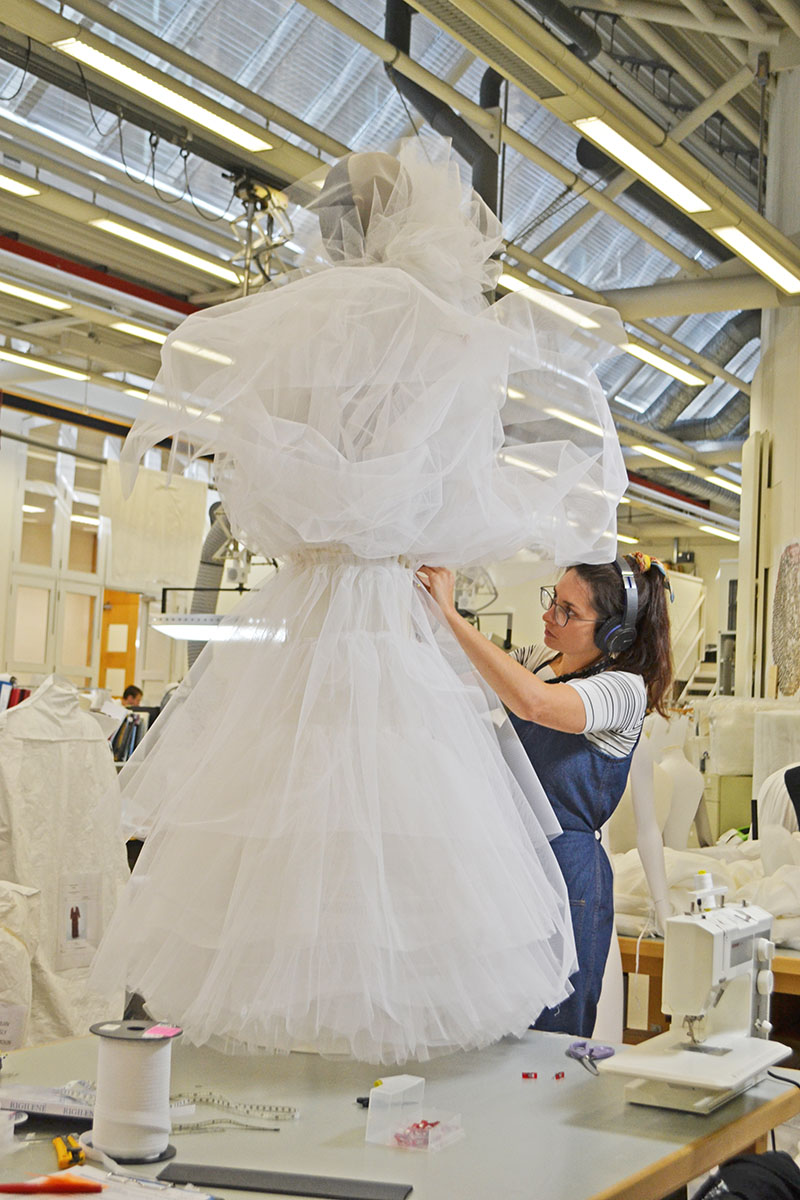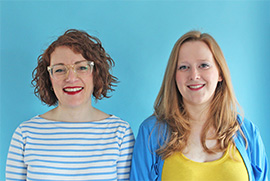Careers in Sewing – Textile Conservation Specialist

Have you ever considered a Career in Sewing? Do you dream of ditching the 9-5 and pursuing your creative dreams? In this blog series we will be posting interviews for a range of different sewing jobs to give you a taste of what possibilities are out there. This week we’ve chatted to Lilia who’s got a fascinating job at the V&A as a Textile Conservation Display Specialist. Alongside this she set up Alice & Co patterns with her mother.
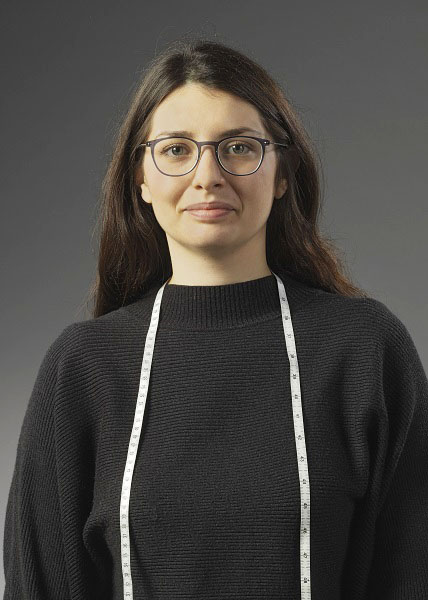
What is your background and how you have ended up working where you are?
I actually have no formal textile/sewing training – after an Art Foundation in London I went on to study English Literature at the University of Glasgow. I got into the V&A through the back door as I came to volunteer in the Textile Conservation studio here one summer, and then just kept coming back and offering my services each holiday. I’ve since learnt that they liked having me because I managed to get myself through the museum without needing a key, so they never had to bother coming to collect me from reception! After I graduated they offered me a contract assisting mounting their Hollywood Costume exhibition and after a few more jobs on shows like Alexander McQueen: Savage Beauty and Undressed: A Brief History of Underwear I was eventually made permanent 2 years ago.
My sewing background all comes from my mum, Alice, and grandmother, Iris, who both taught me how to sew and knit from a young age. In fact, I’m pretty sure I thought that all clothes were homemade before I even realised most people bought them in shops!
Can you tell us about your job and where you work?
For my day job I work at the Victoria & Albert Museum in London. My official job title is ‘Textile Conservation Display Specialist’, which is a bit wordy so we usually go by the name ‘Costume Mounter’. The job sits within the Textile Conservation department and we are responsible for anything to do with mannequins and dressing the costumes for display. It might not seem like it but textiles, and especially costumes, are in fact some of the most fragile objects in the V&A’s collection. A painting has a frame, a sculpture stands up on its own, but without a body or mount inside it a costume would just fall to the floor in a crumpled heap. The role of the costume mounter is to provide that structure that will support the object, in a conservation sense, and also to give an accurate impression of how it would have looked when it was originally worn by a human being. It’s an interesting kind of backwards making process – as the garments are museum objects we obviously can’t alter those, so we have to alter the mannequin to fit the clothes instead. It’s a funny job as the ultimate goal is that you won’t notice that we’ve done anything! But in actual fact every textile item you see in the museum will have passed through our studio and benefitted from our careful attention.
Outside of the V&A I am the daughter half of Alice & Co Patterns, a sewing pattern company which I launched with my mum Alice last year.
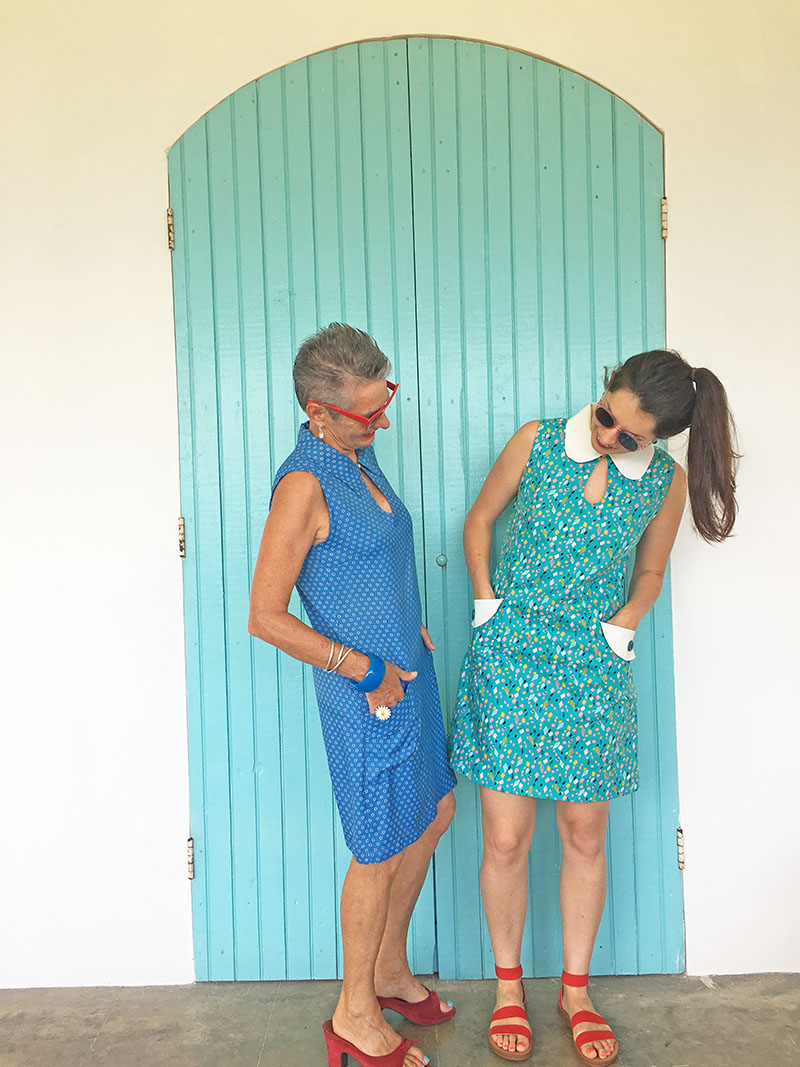
What do you do in a typical day?
My days can be very varied according to what stage we are at in the exhibition cycle.
For example, in the initial planning stages of an exhibition time will be spent visiting our archive at Blythe House (called The Clothworkers Centre – you can book an appointment to visit) assessing objects that are being considered for display. Once all the objects have been chosen and the exhibition designers are on board I will spend a lot of time working with curators, designers and conservators to determine how each object will be displayed – this involves researching mannequin options and lots of meetings, measurements and careful planning. A fair amount of time is spent on project management – you can’t imagine how complicated it is to order mannequins for 200 costumes each with their own unique requirements! Once everything is confirmed and the mannequins have arrived, the real work of mounting each costume begins, which takes place in the Textile Conservation studio. I like to describe the actual process of mounting as a bit like sculpture – we use layers of polyester wadding to build up a mannequin to create the correct historical silhouette and appropriate support for the garment. We will also make any necessary underpinnings such as skirt supports and petticoats that mimic the underwear that would have been worn under the costume to give it the correct historical shape. Occasionally we also make replica garments where parts are missing or too fragile to go on display. Depending on its complexity, a costume might take a single day to mount or a whole week. In the weeks leading up to an exhibition opening date I will be busy moving the mounted costumes into the gallery spaces, getting them into position and making any final tweaks to the mounting to make sure the costumes look their best.
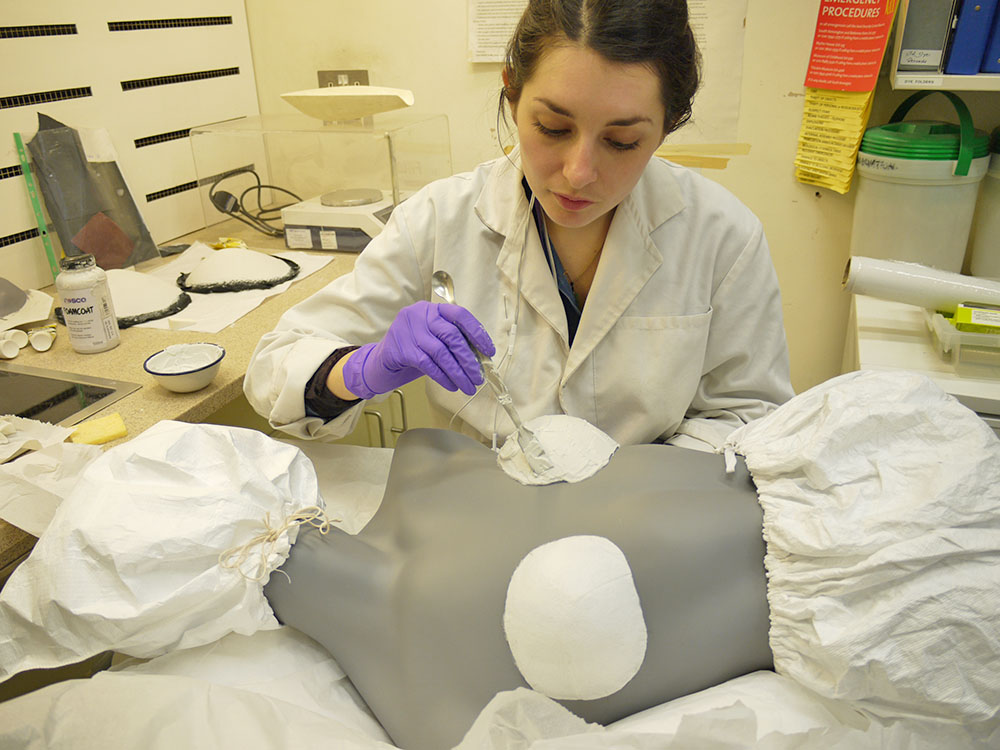
What are the best and worst bits?
The best thing about my job is getting to work so closely with the textiles themselves and amongst such talented and knowledgeable colleagues. I love investigating the insides of garments and seeing how something has been made and imagining who might have made or worn it, and what it meant to them. Sometimes there are little puzzles like patched pieces or darts added or taken out that suggest the history of the wearer or wearers over time. Being able to eat lunch everyday in the John Madejski Garden in the Summer is also quite a perk. I’m sorry I actually can’t think of a worst bit!
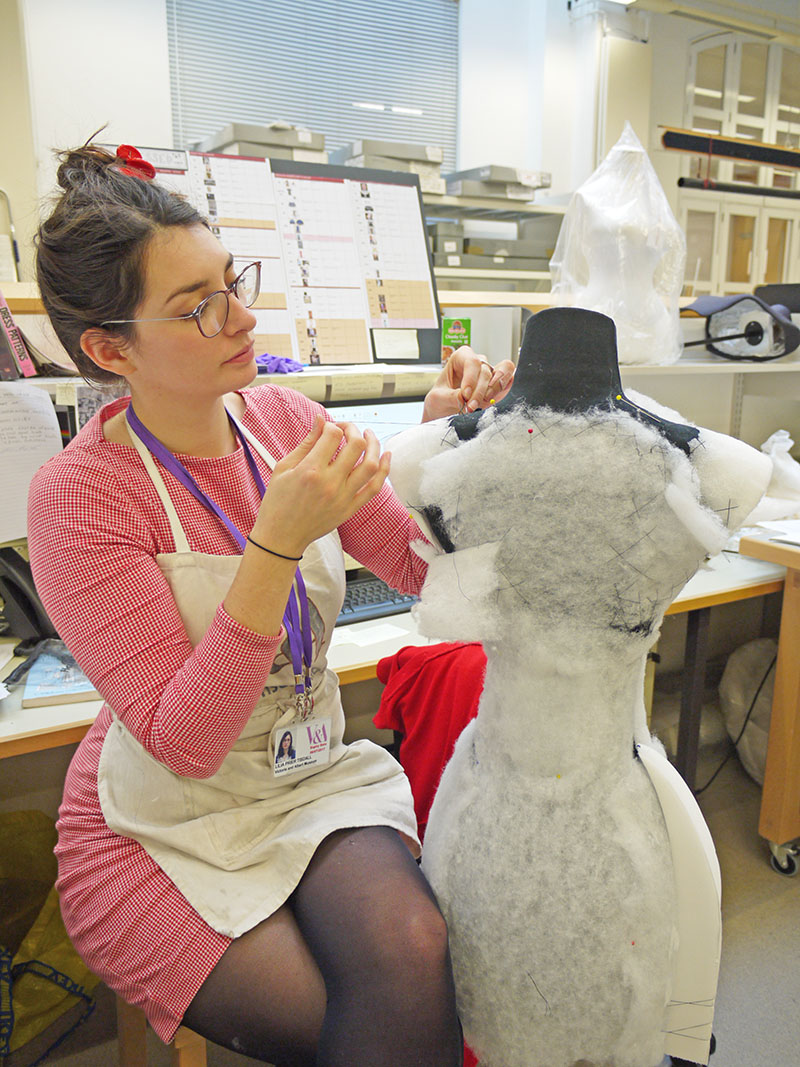
Did you always want a creative career?
My dream job as a child was that I would have ‘fixing’ shop where people would bring me broken things and I would work out how to mend them – which I guess is creative problem solving – and in fact is pretty close to what I do now; I get given a garment and have to work out how to fit it on a mannequin!
What qualifications, skills or experience did you need to get your job?
Most costume mounters have a background in theatre costume or textile conservation. Sewing and pattern-cutting skills are essential, as well as knowledge and interest in historical dressmaking.
Have you continued to train since starting?
Every exhibition brings different objects and new challenges so I feel like I am always learning and researching – whether that’s new mounting materials and techniques or a particular type of historical garment or fashion designer. I felt really privileged to working on the recent Frida Kahlo: Making Herself Up exhibition as that was a fascinating opportunity to learn more about Mexican textiles. I like to go to as many of the lunchtime lectures at the V&A as I can – they are free to attend and cover so many different topics from experts across the museum. I’ve also developed my pattern cutting skills through taking classes my mum’s pattern cutting classes at Ray Stitch.
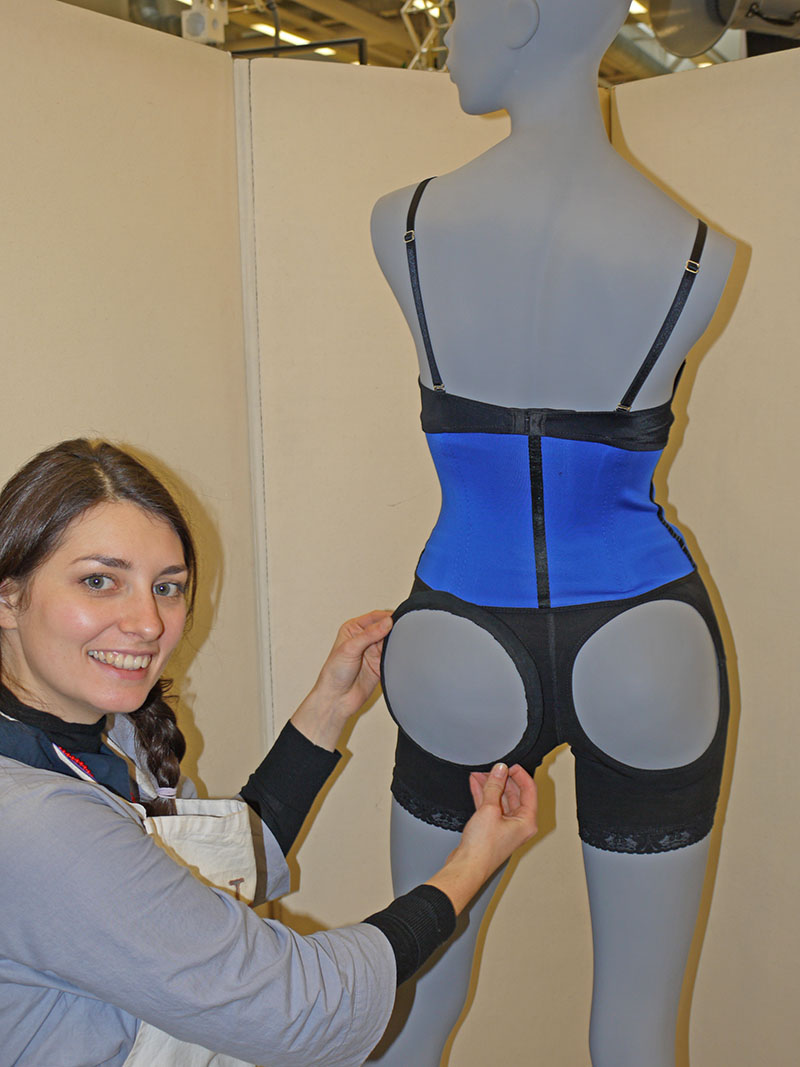
Do you have any tips for someone looking to get into the same thing as you?
Gather as much knowledge as you can and put in some volunteer hours.
If you could do anything else what would it be?
I’ve always liked the idea of being a gardener , although I’ve never managed to keep any green thing alive so think its probably best I stick to inanimate objects and mannequins.
What is your favourite sewing tool and why?
My favourite sewing tool is probably a really sharp pair of pinking shears – is there anything more satisfying? Although equally a blunt pair is my worst.
What are you sewing right now/will be your next project?
Right now I am sewing up samples of the next Alice & Co pattern release – The Regatta Dress. Watch this space!
Links:
Alice & Co website: www.aliceandcopatterns.com
My posts on the V&A Conservation blog: https://www.vam.ac.uk/blog/author/lilia-tisdall

